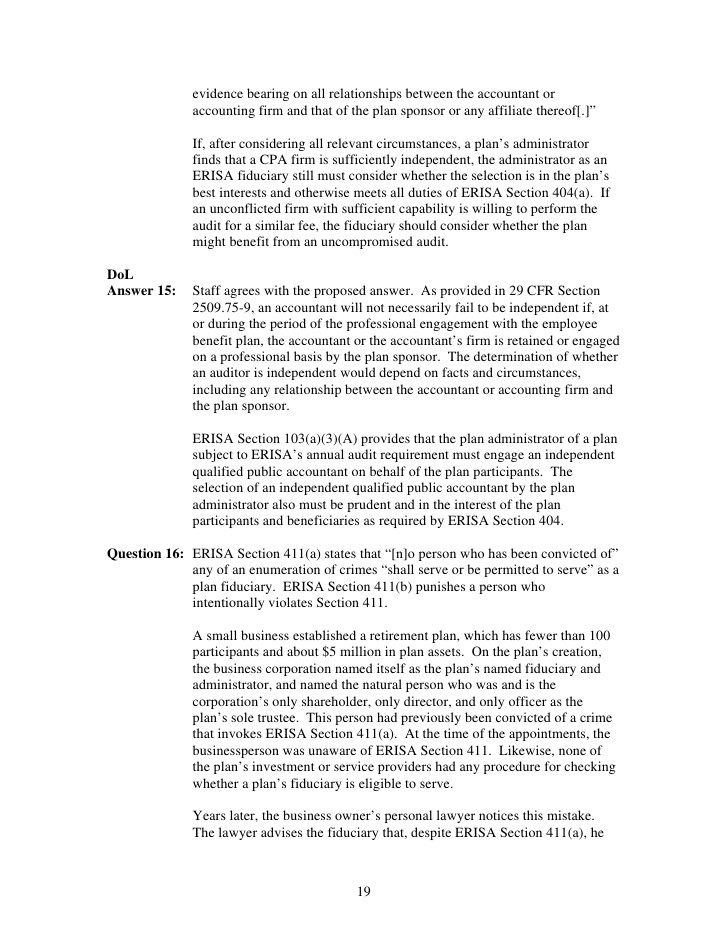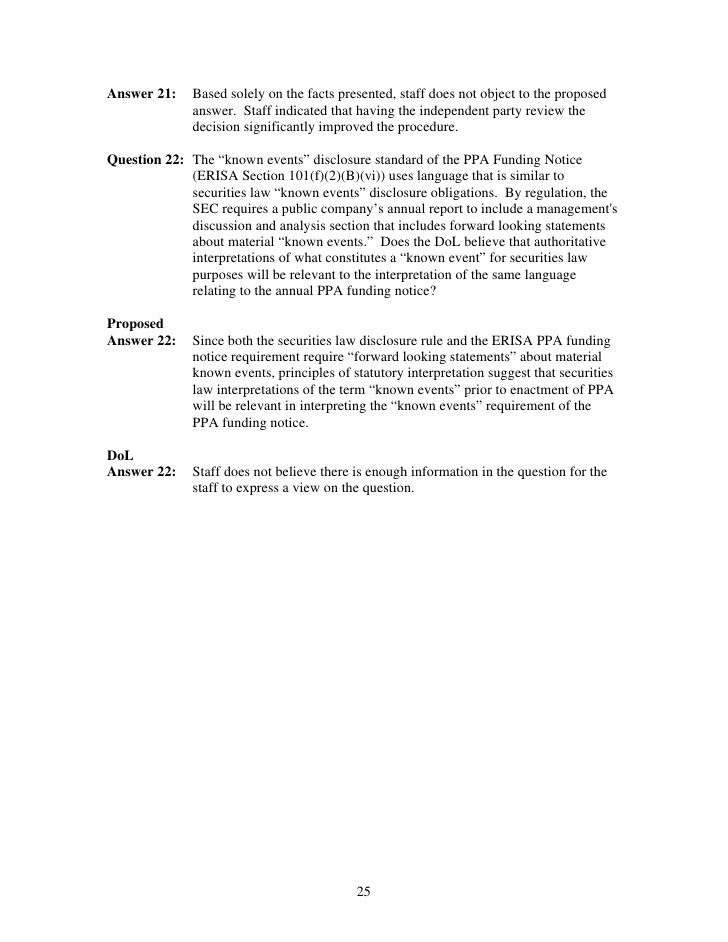Sixth Circuit Allows ERISA Section 404(c) Safe Harbor to Protect a 401(k) Plan s Directed Trustee
Post on: 30 Август, 2015 No Comment

The Sixth Circuit recently allowed the ERISA Section 404(c) safe harbor to protect a 401(k) plans directed trustee from being held responsible for losses in self-directed brokerage accounts. See, Tullis v. UMB Bank, N.A . This case spotlights the importance of this safe harbor for plans that allow participant direction of investments, and the DOLs recent efforts to limit the availability of this safe harbor. It also demonstrates the pros and cons of including self-directed brokerage accounts in a 401(k) plan.
In Tullis. the plaintiffs were two doctors who were participants in the Toledo Clinic Employees 401(k) Profit Sharing Plan (Plan). The Plans investment fiduciary decided to allow participants who wanted a broader range of investment options to invest their account balances through self-directed brokerage accounts. In the early 1980s, the two plaintiffs decided to use these self-directed brokerage accounts, and each chose Bill Davis of Continental Capital Corporation (Capital) to make investment decisions for them. In 2003, a federal district court ordered Capital to cease operations. It turned out that Capital was defrauding the doctors, and their losses totaled approximately $1.5 million. After learning of the fraud, the plaintiffs sued the Plans directed trustee, UMB Bank, N.A. (UMB), alleging that UMB breached its fiduciary duties to the Plans participants. The plaintiffs alleged that UMB knew of the fraud yet failed to inform the participants. As such, the plaintiffs argued that UMB should be liable for the losses. The DOL filed an amicusbrief in support of the plaintiffs position. UMB argued that ERISA Section404(c) provided an affirmative defense because the losses resulted solely from the plaintiffs actions. UMB also sought indemnification from the plaintiffs for the cost of the litigation.
In other words, the essential issues was the scope of protection of fiduciaries under ERISA Section 404(c). Section 404(c) shields fiduciaries from liability for losses that result from a participants exercise of control over investment options. This protection provides an affirmative defense to a claim ofbreach of fiduciary duty under ERISA. The protection will apply when (1) the participant exercises independent control over the assets held in his or her account in the plan, (2) the participant is able to choose from a broad range of investment alternatives, (3) participants are provided with a reasonable opportunity to give investment instructions to a plan fiduciary obligated to comply with those instructions, and (4) participants are provided with sufficient information to make informed decisions regarding investment alternatives available under the plan. A participant does not exercise independent control if a plan fiduciary has concealed material non-public facts regarding the investment from the participant.
The plaintiffs conceded that the first three requirements were met, but alleged that UMB concealed material non-public information about the fraud. The plaintiffs alleged that UMB knew about the fraud years before the information became public. Finding no such concealed information, the court chided both Plaintiffs and DOL for citing minimal facts to support the allegations. The court considered some of the plaintiffs evidence as too vague to lead to a conclusion that UMB concealed material non-public information. Other pieces of evidence, such as court filings, were publicly available, and as such, the court concluded that UMB did not have a duty to disclose that information. Accordingly, the court upheld the District Courts grant of summary judgment in favor of UMB.

In addition, the Sixth Circuit agreed to require the plaintiffs to indemnify UMB for the cost of thesuit because the trust agreement and other plan documents required such indemnification. While courts have the discretion to award attorneys fees, we do not often see fees awarded to a prevailing ERISA defendant. Accordingly, these indemnification provisions were critical. The doctors argued that these provisions should be waived as a matter of equity, but ERISA allows indemnification provisions so long as they do not relieve a fiduciary of responsibility or liability.
This case provides a number of lessons for employers. First, if an investment fiduciary is going to allow participants to direct investments, then compliance with ERISA Section 404(c) is important. We encourage employers to establish 404(c) compliance programs and conduct reviews of procedures. Second, allowing self-direct brokerage accounts can help demonstrate compliance with 404(c). But brokerage accounts allow participants to make choices they may later regret, 404(c) is just a defense to a claim that someone else is responsible for these choices, and the DOL has been chipping away at 404(c) in recent briefs. Third, ERISA litigation can be time-consuming and expensive. For example, we first blogged about this case back in 2008, when it went to the Sixth Circuit for the first time. Accordingly, fiduciaries should periodically review the adequacy of their indemnification provisions and other protective mechanisms.
For further background on Tullis v. UMB Bank, N.A.. please see post on our sister blog Employer Law Report here .














